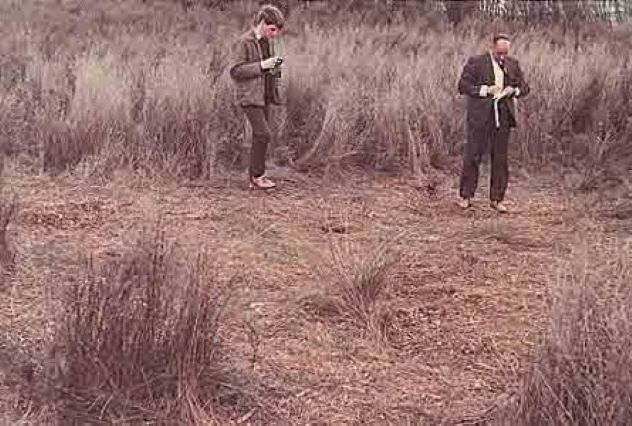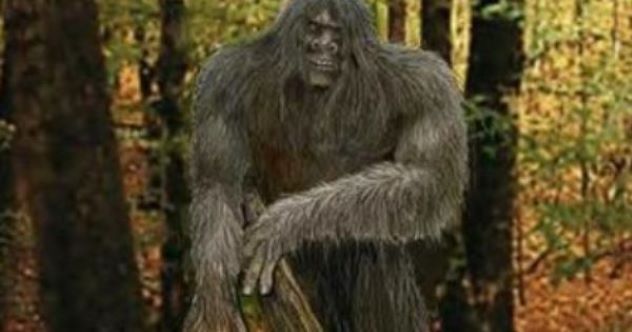Who doesn’t love a good mystery?
Some have logical explanations, of course, but others defy any attempt to explain them away. Even a small island nation like New Zealand (home to myself as well as some guy named Jamie Frater), roughly the size of the state of Colorado, seemingly has more than its fair share of unexplained events.
Here are ten head-scratching mysteries from the Land Down Under that might just make you go hmmm.
Related: Top 10 Wacky Things New Zealanders Love To Eat
10 The Crewe Murders
On June 22, 1970, Len Demler walked into the farmhouse belonging to his daughter Jeanette and her husband, Harvey Crewe. There was no sign of the couple, but there was blood—lots of it. Then, Demler heard his 18-month-old granddaughter calling out from her bedroom. He ran to find her in her cot, hungry and filthy but otherwise unharmed.
Almost a month to the day after the murders, fishermen found Jeanette’s body floating in the nearby Waikato River. She was wrapped in a bedspread, and there was some evidence that the body had initially been weighted down. Several weeks later, Harvey was found in the same river, tangled in weeds a few kilometers (a mile or so) away.
Police arrested a local farmer known to the Crewes, Arthur Allan Thomas, alleging that he was obsessed with Jeanette. Thomas was found guilty, and after spending nine years in prison, a Royal Commission of Inquiry determined that a spent cartridge allegedly tying Thomas to the double-homicide had been planted by two police officers in order to secure a conviction. Thomas was subsequently paid $NZ 950,000 in compensation for the time spent in prison and for the loss of his farm.
To this day, the killer or killers have never been found. However, the evidence seems to indicate that they were familiar with the Crewe property and local area. For over fifty years now, someone has gotten away with murder.[1]
9 The Kaikoura UFO Sightings
On December 21, 1979, not long into a flight south from New Zealand’s capital city Wellington, the two pilots and four passengers on board a Safe Air flight reported seeing a strange light in the sky.
Conveniently on board the small plane that night was David Crockett, a freelance cameraman. Crockett grabbed his camera and began to film the light. On the return trip later that night, the light could be seen again. It also appeared on the plane’s radar, indicating that there was an object in the sky at a distance of approximately 29 kilometers (18 miles). When the aircraft turned toward the light, it seemed to react by moving away.
A week later, a television film crew attempted to film the light and managed to record multiple lights for several minutes. Journalist Quentin Fogarty later said they were mesmerized by the mysterious phenomenon. “We saw this string of lights; it started as a small pinpoint of light then grew into this large pulsating globe with tinges of orange and red,” he stated. “We were told after it was about the size of a house,” he added.
Explanations for the strange lights included that it was merely Venus or Jupiter or brightly lit Japanese squid boats off the coast. Some even hypothesized that it was light reflected from fields of cabbages below. However, it is hard to explain how any of these appeared on the radar.[2]
8 Zuiyo-Maru Carcass
In April 1977, the Japanese fishing vessel Zuiyo-Maru was trawling for mackerel some 40 kilometers (25 miles) off the coast of Christchurch when a large, rotting carcass became entangled in its nets. The putrefied remains, estimated to weigh over 1,800 kilograms (3,950 pounds) and measure some 10 meters (33 feet) in length, were lifted on board.
Crew member Michihiko Yano had some training in biology and research methodology, and he sketched the peculiar stinking hulk and took several photos. Yano also had the presence of mind to take several tissue samples before the creature was thrown back into the sea in order not to spoil the catch.
The evidence was studied by a team of scientists at the Science Museum of Tokyo. They unanimously declared that the animal was a plesiosaur, a large marine reptile that lived during the Jurassic period, thought to have become extinct some 65 million years ago.
French researchers later examined the evidence and concluded that the creature was no ancient marine reptile but rather the decomposing remains of a basking shark, a species that could be found in the cooler waters further to the south. While the photos and sketch seemingly showed a creature with a long neck, small head, and no dorsal fin, they hypothesized this was due to the decomposition of the carcass and predation.
Shark or sea monster? Since the biological samples have been lost, the sea will hold onto the answer for awhile longer.[3]
7 The Ngatea Mystery Circle

On September 4, 1968, farmer Bert O’Neil discovered a strangely affected patch of ti-tree scrub on his farm in Ngatea, a small settlement in New Zealand’s North Island. To his surprise, he saw a perfectly circular patch of dead, silvery-white brush amid otherwise green and lush native bushland. On the ground near the center of the circle, O’Neil found three very strange, deep V-shaped indentations positioned like the points of a triangle.
News of the unusual find quickly spread, and unfortunately, nearly a thousand curious visitors swarmed to the site. Sightseers and souvenir hunters trampled the strange markings on the ground and removed much of the vegetation. This occurred before they could be examined by the university scientists, who arrived some five weeks after the initial discovery of the anomaly.
As more reports of similar circles began to pop up from different parts of the island and headlines screamed “Is Mars Now Taking a Look at Us?” authorities scrambled to explain the phenomena. Theories ranged from defoliant sprayed from an aircraft or plants ravaged by fungal growth. The ground indentations, they asserted, had been made by rabbits or wild pigs. However, it has been estimated that for the ground cuts to be as deep as they were, cutting through tree roots, some 20-tons of pressure would have to be exerted.
The Ngatea circle remains the best known of the odd “mystery circle” events of the 1970s. Like the UFO sighting hysteria of the time, it eventually faded from the news and into memory.[4]
6 The Nelson Street Ripper

In 1914, Frederick Marshall stayed up all night anxiously wondering where his wife could be, only to be told by a neighbor in the morning that “your missus has been murdered.” Marshall raced to the local police station, where he learned that it was true—his wife of some 20 years had been savagely stabbed and slashed to death.
Frances had been found in a narrow alleyway and had suffered dozens of wounds on her head, neck, and chest. Her skull was fractured, her lungs and heart were pierced, and her jugular vein was slashed. Her attacker, it was surmised, likely killed her with a pocketknife. There were no obvious signs of a struggle, nor was it a robbery, as her handbag was found under her body, containing money worth about $NZ 40 today. While her clothes were described as being somewhat “disarranged,” her small blue hat was still on her head.
Sensational news reports likened the savage crime to the infamous Jack the Ripper serial killings in London. They alleged that Frances was probably killed by that “foul being known to scientists as a necrophilo (sic)—one who satiates his lust on the body of the dead.”
Police records describe Frances as having been working that evening as a prostitute, although Marshall vehemently denied this suggestion. He did, however, admit that he hit her from time to time. Ultimately, the coroner concluded that Frederick wasn’t involved in her death and that it was likely Frances had been murdered by some unknown person.[5]
5 Moehau Man
All over the world, many cultures have tales and legends of huge, hairy, ape-like creatures. In the Americas, there is Sasquatch or Bigfoot. In the Himalayas, the Yeti. In Australia, the Yowie.
Here in New Zealand, we have Moehau Man, named for the tallest peak in the mountain range where the creature was first allegedly sighted. It is a sacred place to the Maori and is said to be an area where all sorts of mythical creatures can be seen.
As European settlers began to disperse across the island nation in the late 1800s, tales of the Moehau Man started emerging. Initial reports were from people merely being startled by large, hairy human-like creatures deep in the native bush. Then more ominous tales began to emerge of settlers being maimed and killed.
In 1983, two hikers claimed to have seen seven of the creatures in the Lake Waikaremoana area, dressed in what appeared to be cowhides. They estimated that one adult male in the group stood about 1.8 meters (6 feet) tall. From their vantage point hidden in the forest, they watched the group for several minutes as they made their way along a rocky creek, then disappeared into the woods.
In 2001, Australian Yowie “expert” Rex Gilroy traveled to New Zealand to investigate the Moehau Man for himself in the hopes of gathering good anecdotal as well as possible physical evidence. Gilroy claimed to have found large hominid footprints on a remote forest track in the Urewera National Park. He proudly displayed two plaster-cast molds for the eager media.
Until there is some kind of definitive proof from perhaps a more trustworthy source, for now, Moehau Man is just like its hairy brethren, the Sasquatch and the Yeti. They remain just a story and something of a myth.[6]
4 The Wreck of the Joyita
On November 10, 1955, the small cargo ship MV Joyita was discovered drifting some 600 nautical miles off course, devoid of the crew, passengers, and cargo. The Joyita had been expected in the small New Zealand dependency of Tokelau, but it had never arrived. The mystery of what happened to those on board has seen it dubbed “The Mary Celeste of the Pacific.”
There had been 16 crew members and nine passengers, including two children, on board when the vessel had gone missing 38 days earlier. The Joyita carried four tons of cargo, including medical supplies, food, and empty oil drums, but most of that was missing. The ship’s logbook, sextant, and other navigational equipment were gone, along with all three lifeboats and the firearms that were known to be onboard. Also, there were some sinister indications of possible violence. The ship’s bridge had been smashed, and still on the deck, a doctor’s bag was found open along with several bloody bandages.
The Joyita still had plenty of fuel, and it was possible that it had been abandoned when the vessel began to take on water. However, the cork-lined hull and 80 empty oil drums on board pretty much made it unsinkable. The missing cargo may have been taken by opportunistic vessels that had come across the abandoned vessel. Others theorized that it might be pirates or possibly insurance fraud.
After the wreck, rather creepily, the Joyita was repaired and went back into service as a cargo vessel again. However, after running aground on a reef, it was at long last deemed an unlucky ship. It was stripped and broken down. Now, no trace of the Joyita remains, and the whereabouts of those unlucky souls on board remains an enduring mystery.[7]
3 The Missing Dragonfly
Nearly 60 years after a plane went missing between Christchurch and Milford Sound, groups of searchers are still looking for it in the rugged mountainous regions of New Zealand’s South Island.
Pilot Brian Chadwick’s Dragonfly plane went missing on a scenic flight on February 12, 1962, with five passengers on board. When it failed to return, authorities embarked on one of the most extensive aerial searches in New Zealand history, but the plane was never found.
Searcher Bobby Reeve said the discovery of a woman’s boot in a remote mountain location has led them to believe the plane was about 8,000 feet up, deep in the permanent snow. “I think if it had been in the bush the whole time, it would be covered in moss—but it wasn’t, which is why I think it’s come down off the snow.” He’s asked the mountaineering community to help continue the search in the treacherous and unforgiving terrain. “It’s too dangerous—both of my sons have fallen off the side of the mountain already,” he said.
And the search goes on.[8]
2 Mysterious Moas
Despite its small size, tales abound of long-extinct birds apparently thriving away from human eyes. Moas were New Zealand’s nine species of flightless birds, thought to have become extinct about 1400 after being hunted into extinction by the indigenous Maori. The largest moa measured 3.6 meters (12 feet) at full height, weighing some 230 kilograms (510 pounds), while the smallest was approximately the size of a turkey.
Although the moa died out well before European settlement, tales of moa living in deep hidden valleys persist even to this day. When West Coast publican and mountaineer Paddy Freaney claimed to have tangled with a moa in the Cragieburn Valley in Jan 1993, authorities didn’t take it very seriously. However, there was a frenzy in the international media.
Other critters allegedly seen roaming in the more remote regions of New Zealand are more exotic, including otters, panthers, and even moose.[9]
1 The Mystery of the Invercargill Pool Pooper
A mystery pooper dubbed “the brown bomber” struck a public pool complex in New Zealand’s southernmost city of Invercargill for six Fridays in a row in 2015.
Staff at the Splash Palace aquatic center launched an investigation into whoever could have been the pooping perpetrator of the series of weekly “code brown” evacuations of the pool complex. The worst incident saw the entire facility closed after brown bombs were found in all three pools over a three-hour period.
Unfortunately, staff was unable to find the culprit in the act because while the pool complex had cameras, they were “not high definition enough to pick up the red face of someone squinting,” explained Splash Palace spokesman Pete Thompson.
Invercargill mayor Tim Shadbolt said the international media interest generated by the serial brown bomber was not particularly good publicity for his city. “Phantom pooper in the pool isn’t the sort of headline you want,” he explained.[10]
